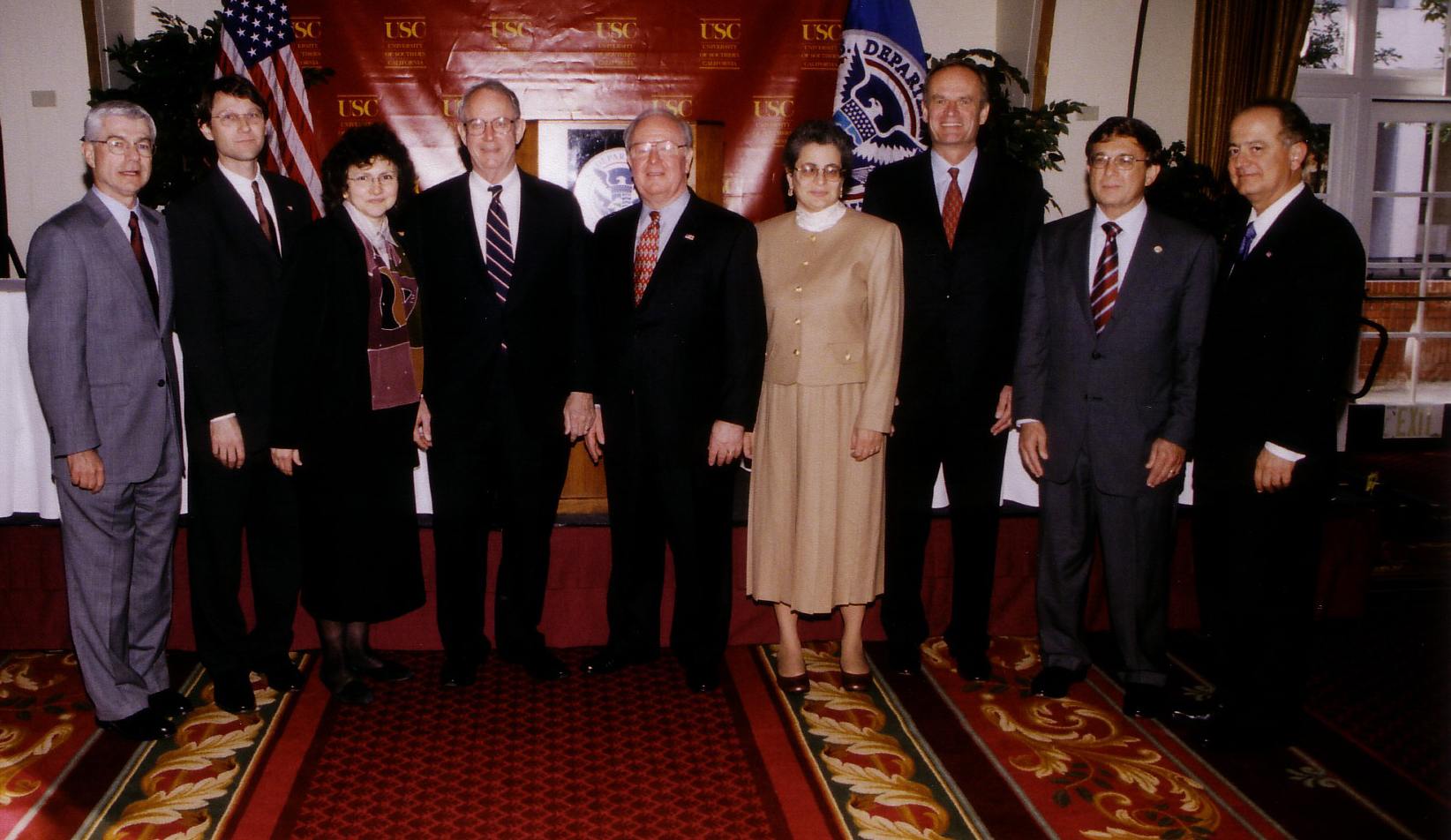 |
 |
 |
 |
 |
ICIS fosters the development of a broader, more interdisciplinary and integrated framework for research in a number of ways. Through collaborations ICIS: 1) convenes interactive forums around key issues; 2) has developed and supports an ongoing process for building a national infrastructure research agenda; and 3) focuses attention on topics that allow young researchers and students to think in new ways about the broader context of infrastructure.
Some examples of our work in this area include:
-
Critical Infrastructure Protection
Funded by the U.S. Department of Homeland Security through the University of Southern California , CREATE Ė Center for Homeland Security, Center for Risk and Economic Analysis of Terrorism Events, located at the University of Southern California .
Participating Institutions: New York University , University of Wisconsin-Madison, Structured Decisions Corporation

The nationís critical infrastructure has a key life-saving and quality of life role, makes an enormous contribution to the Gross Domestic Product, and has assets estimated to be worth several trillions of dollars. Infrastructure systems are vulnerable to disruption by virtue of their typically large physical distribution networks and centralized production systems. Catastrophic terrorist attacks on infrastructure have occurred globally. Given these threats and the potential for cascading effects of attacks on the nationís infrastructure exacerbated by interdependencies among infrastructure systems, the U.S. government has placed a very high priority on their security. New York University is undertaking an electricity case during the first year. This is aimed at providing inputs to the assessment of the threat, vulnerability, risk and impacts of potential terrorist attacks on critical infrastructure and effects of infrastructure impairments on human life and the economy from a diagnosis of actual events as a basis for investments to reduce impacts in the event of such attacks.
For further information on CREATE, see www.usc.edu/CREATE
- Public Infrastructure Support for Protective
Emergency Services
Funded by the U.S. Department of Homeland Security through the NYU Center for Catastrophe and Response.
Protective emergency services, such as emergency management, health, police and fire protection, routinely depend upon a wide range of traditional infrastructure support services, including transportation, energy, water, environmental protection, and communication infrastructure, to provide and deploy human resources, goods, and information in times of crisis. This project identifies relationships between these two types of service areas and vulnerabilities and choke points created at interconnection points during emergencies, to prepare managers and operators of both traditional infrastructure services and emergency services with an explicit way of incorporating each othersí needs into the design of their services. The project goal is to help develop easily communicated emergency procedures for infrastructure managers that focus on the key interconnections between traditional infrastructure and protective services and the vulnerabilities in these linkages that emergency conditions create. The outputs includes: criteria to identify interconnections between emergency services and other infrastructure; two workshops to obtain input from practitioners and academicians; a demonstration of actual interconnection points in selected geographic areas and service sectors and a review of prototypical interconnections and vulnerabilities; and methods to disseminate results.
- Risk Communication for the NYU CCPR Large Scale Emergency Readiness (LaSER) Project: A Public Health Approach
Funded by the U.S. Department of Homeland Security through the NYU Center for Catastrophe and Response.
Understanding risk communication principles is critical to leadership in times of crisis, and will enable the building of effective capacity to reduce the consequences of terrorism. Under crisis conditions, communication should be planned based upon consideration of message content, the characteristics and needs of message senders and recipients, and the technology being used to convey messages so that delay is minimized in involving the appropriate personnel and responses. The nature of these factors differs for pre-disaster, during disaster and post-disaster conditions. These dimensions will be incorporated into the risk communication task for LaSER.
The overall goal of the risk communication task (3A) of the LaSER project is to develop and test critical communication strategies and plans for community public health preparedness, response, and mitigation of event consequences before, during and after a large scale, urban terrorist event. An interdisciplinary approach is adopted drawing on social psychology, communication technology, and risk communication that is directly applied to health threats. The project is initially targeted to a large scale, biological, chemical or nuclear terrorist act in the New York City Region, but is scalable to other U.S. cities. This work will coordinate with and support other components of the LaSER Project.
- Learning from Disasters: NSF Response and Opportunities for Future
Research
 www.nyu.edu/icis/Recovery
www.nyu.edu/icis/Recovery -
First Annual Conference on Infrastructure Priorities: A National Infrastructure Research Agenda
 www.nyu.edu/icis/InfraPriorities/
www.nyu.edu/icis/InfraPriorities/ -
Bringing Information Technology to Infrastructure: A Workshop to Develop a Research Agenda
 www.nyu.edu/icis/itworkshop/
www.nyu.edu/icis/itworkshop/ -
South Bronx Environmental Health and Policy Study
The main goal of the South Bronx Environmental Health and Policy Study is to study environmental and health issues affecting the South Bronx, with particular emphasis on the relationships between air quality, transportation, waste transfer activity, demographic
characteristics, and public health. It is a collaborative research project that involves the NYU School of Medicineís Nelson Institute of Environmental Medicine (NIEM), the NYU Wagner Graduate School of Public Serviceís Institute for Civil Infrastructure Systems (ICIS),
and four community groups: The Point Community Development Corporation, We Stay/Nos Quedamos, Sports Foundation Inc., and Youth Ministries for Peace and Justice Inc.
The South Bronx Environmental Health and Policy Study is funded with an appropriation sponsored by Congressman Josť E. Serrano and is administered by the EPA.